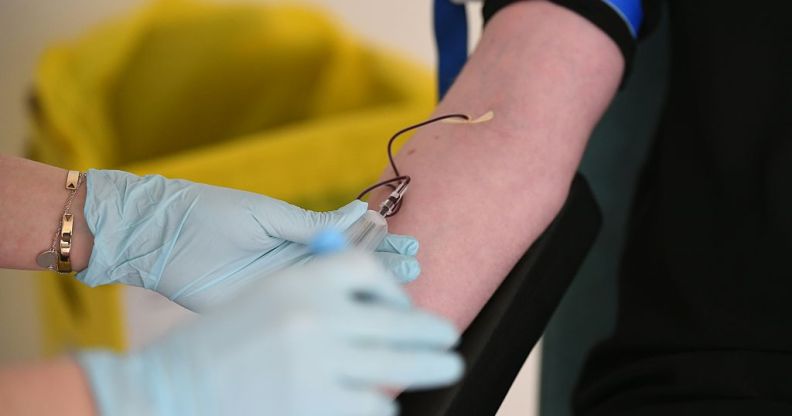Huge fall in new HIV infections among gay and bisexual men due to use of PrEP

People who visited the spa are being asked to get tested for blood-borne infections (Getty)
People who visited the spa are being asked to get tested for blood-borne infections (Getty)
The number of gay and bisexual men diagnosed with HIV has fallen by more than a fifth.
New figures show a 21% fall in new HIV infections among men who have sex with men (MSM) from 3,750 during 2015, to 2,810 in 2016.
Public Health England say the fall “represents the most exciting development in the UK HIV epidemic in 20 years”.
Among the general UK population, new diagnoses have fallen by 18% from 6,286 in 2015 to 5,164 in 2016.

Health bosses credit access to PrEP, a daily HIV-prevention pill, with the fall, and say the trend “will be further strengthened with the implementation of the PrEP Impact Trial over the next three years.”
The number of gay and bi men accessing sexual health clinics has also risen from from 37,224 in 2007 to 143,560 in 2016.
An NHS England spokesperson said: “The new figures out today show that NHS investment in HIV prevention is paying off.
“High rates of effective treatment in people with diagnosed HIV, our Treatment as Prevention policy which ensures that people receive treatment to protect HIV negative partners and our major intervention with PrEP, which will be up and running by the end of this month, will supercharge these increasingly successful efforts to prevent HIV.”

The decline in HIV diagnoses in gay and bisexual men is particularly focused in parts of London – where diagnoses decreased by 29% from 1,554 in 2015 to 1,096 in 2016.
Outside of London, the fall was 11% among this group.

EXPLAINED: What is PrEP and where can I get it?
Responding to the news, Liberal Democrat leader Sir Vince Cable told PinkNews there should be routine HIV testing by GPs.
Ian Green, Chief Executive of Terrence Higgins Trust, said: “Today’s figures show we’ve started something – we’re beginning to see the reversal of the HIV epidemic in some communities in the UK.
“HIV diagnoses in gay and bisexual men, one of the groups most affected, are declining; showing what can be achieved when we utilise all the weapons in our arsenal against HIV transmission.
“This includes access to condoms, testing, PrEP and diagnosing and treating people as early as possible so they can become uninfectious.
“Despite the good news, the number and proportion of diagnoses made at a late stage of HIV infection remains high, particularly among heterosexual men and women.”
32% of gay and bisexual men were diagnosed at a late stage, while the number was almost double for heterosexual men at 60%.
Late diagnosis is associated with a higher risk of short term mortality and increased risk of onward transmission, since those diagnosed late have been unaware of their HIV infection for around three to five years.
Ian Green added: “This is not the full picture. This data gives us important information about who is aware they have HIV, but it doesn’t tell us about those who still have no idea they are living with the virus.
“The real picture of HIV in the UK will remain unclear until this data is available in November.”
The UK’s largest sexual health clinic, Dean Street, in central London, has also reported a 40% fall in new infections.

